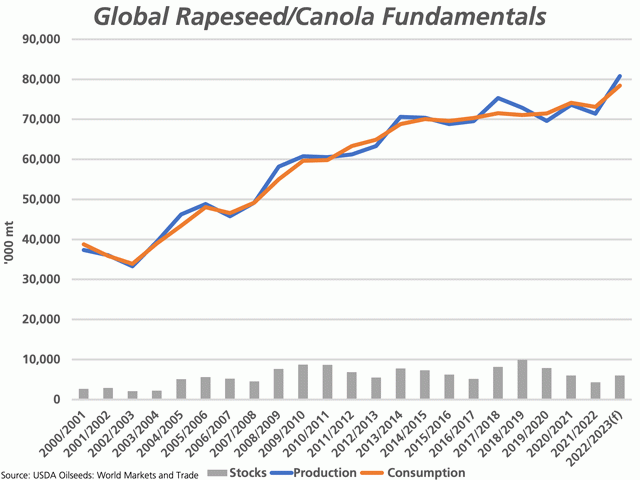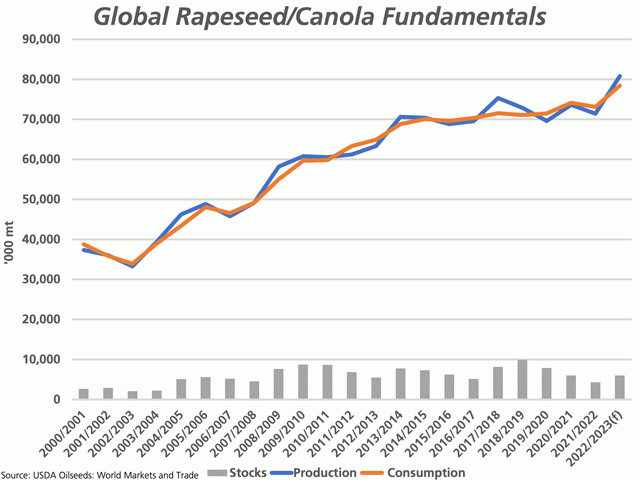Canada Markets
USDA Pins High Hopes on Canadian Canola
Based on USDA Foreign Advisory Service data, global canola/rapeseed production (blue line) is to exceed consumption (brown line) for the first time in four years in 2022-23. Production is to exceed consumption by 2.372 million metric tons (mmt), which will be the largest spread seen since 2017-18, or five years. Forecasts for both production and consumption are currently shown at record levels, with the global production forecast at 80.795 mmt, up 9.4 mmt or 13.2% from last crop year, while consumption is forecast at 78.423 mmt, up 5.3 mmt or 7.2%.
Current forecasts show China increasing output by 700,000 metric tons year-over-year, the European Union increasing by 985,000 mt year-over-year, and the Other producers category is forecast to increase production by 328,000 mt. The E.U. forecast for 2022 production was revised 250,000 mt lower from the May forecast. At the center of the radar is the forecast for Canada, where production is forecast to increase by 7.4 mmt from 2021-22 to 2022-23, representing 78.6% of the global production increase in production.
P[L1] D[0x0] M[300x250] OOP[F] ADUNIT[] T[]
Such a forecast would not only allow for growing use, as indicated, but would also allow for stocks to grow, as seen on the grey bars on the attached chart. The USDA's June report shows stocks increasing by 1.712 mmt or 39.7% year-over-year to 6.022 mmt, the first year-over-year increase in four years and would be the fourth increase in 10 years. Stocks as a percentage of use are forecast to climb from 5.9% in 2021-22 to 7.7% in 2022-23.
Given the challenges faced in spring planting across the Prairies, market watchers are best advised to have their erasers handy. A struggle to seed crops in eastern Saskatchewan and Manitoba will result in a reduction in overall acres seeded, with Statistics Canada due to release updated acreage estimates on July 5.
In addition to spring seeding weather challenges, a move to switch from longer-season crops to crops such as canola may have led to shortages in seed in some areas, while many acres have been seeded in far-below optimal conditions. The crop is late overall, and one example is seen in the Alberta Crop Report where an estimated 30% of all Peace Region crops have emerged, well-below the five-year average of 68% for this week.
Cliff Jamieson can be reached at cliff.jamieson@dtn.com
Follow him on Twitter @Cliff Jamieson
(c) Copyright 2022 DTN, LLC. All rights reserved.






Comments
To comment, please Log In or Join our Community .